Methods for mounting polycarbonate
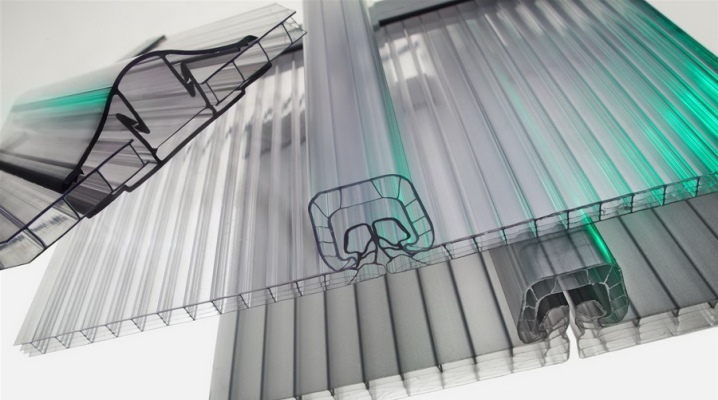
Polycarbonate is currently one of the most popular and versatile materials. It is used for different purposes. Installation of polycarbonate sheets is not difficult, so even those masters who are barely familiar with such work can easily cope with it. In this article, we will learn how you can install polycarbonate with your own hands.
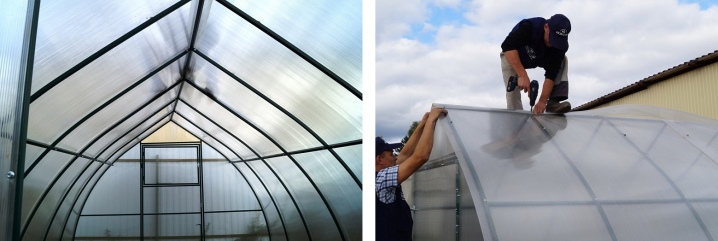
Fundamental rules
Polycarbonate is a sheet material that comes in different varieties. Consumers can choose both transparent (colorless) and colored products. Sheets are either perfectly smooth or ribbed. Different types of polycarbonate are suitable for different purposes. However, these materials are united by the fact that they can be installed without problems, even if an inexperienced master gets down to business.
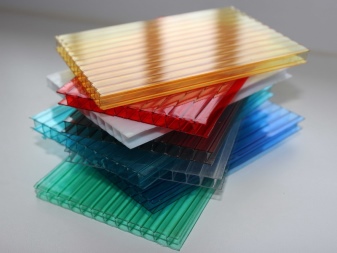
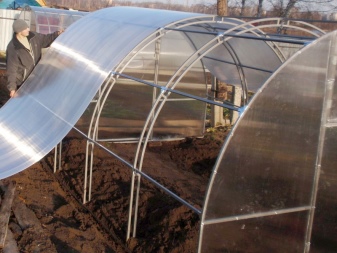
When installing polycarbonate sheets on one or another base, the master must definitely remember about a number of relevant rules. Only if you follow them, you can expect good results and not be afraid of making serious mistakes. Let us examine the points about which installation rules are in question.
- The master must correctly orient the polycarbonate panels before installing them. Vertical, pitched or even arched structures can be assembled from such materials. In each of the above cases, the sheets must be oriented according to a separate scheme.
- Before attaching polycarbonate sheets to a wooden or metal frame, the master will have to cut them correctly. This is a very important stage of the work, during which it is better not to make any mistakes. Cutting can be carried out either with a hacksaw or with a simple knife. If the separation of sheets should be as accurate and fast as possible, then the indicated tools will not be enough here - you will need to use an electric saw with an emphasis and a blade made of hard alloys.
- After cutting, the master must absolutely get rid of all the chips that remain in the internal cavities of the panels. If polycarbonate is cellular, this item is especially relevant.
- Holes in sheets can be made using a standard drill bit sharpened at a 30 degree angle. Holes are drilled at a distance of at least 4 cm from the edges of the sheet.
- For the installation of polycarbonate sheets, you can make frame bases (battens) not only from wood, but also from steel or aluminum.
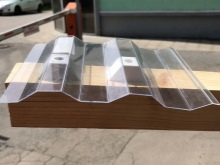
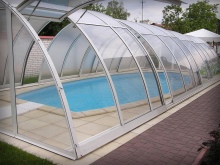
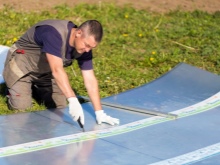
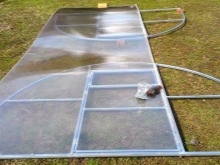
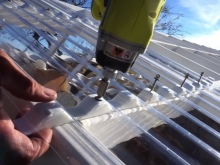

Such structures are allowed to be erected directly on the construction site, but at the same time all fasteners must be ideally strong and reliable. The quality of the future structure will depend on this.
It is advisable to separately talk about what features should be taken into account when installing polycarbonate on a metal base. In this case, the master should take into account that metal and polycarbonate are materials that do not "get along" in the best way.
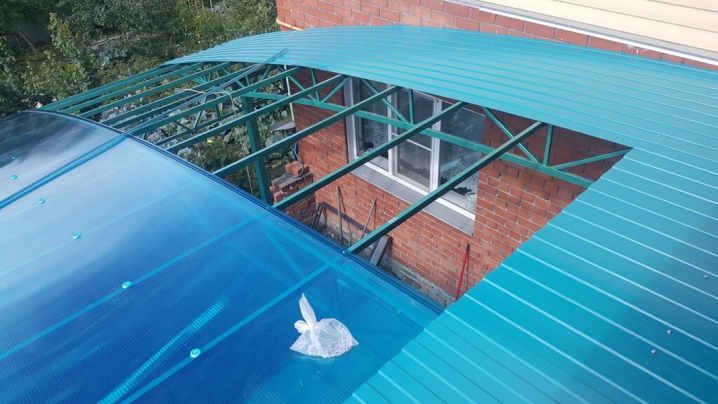
Such features of the materials under consideration cannot be ignored when engaged in installation work.
Let's take a look at a few basic rules regarding installation in such conditions.
- Polycarbonate sheets are characterized by a very high coefficient of thermal expansion - several times higher than that of metal. This suggests that any options for fastening polycarbonate to a metal crate must be accompanied by special compensating gaps.This rule cannot be neglected if you want to end up with a reliable and durable structure.
- Due to temperature fluctuations, especially during periods of early spring, the material in question often begins to "ride" on the metal support base. Since plastic surfaces are much more plastic than metal surfaces, the edges of the sheets begin to become covered with cracks and scratches over time. The master must take into account such features of the materials with which he works.
- Polycarbonate of both honeycomb and monolithic type has high heat capacity, but low thermal conductivity. As a result, due to temperature fluctuations, condensation forms on the elements of the metal frame, especially under the fastening points and in the inner part of the honeycomb. That is why the master must be sure to thoroughly clean them and paint them from time to time.

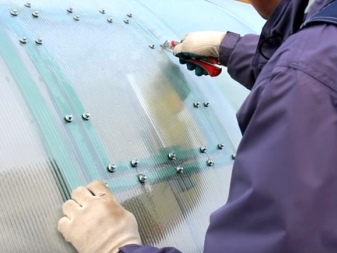
One of the main rules regarding the installation of polycarbonate is conscientiously fixed fasteners and a reliable frame base. If all structures are assembled competently and carefully, you can not worry about the practicality and durability of the resulting structure.
What do you need?
Sheets of high-quality polycarbonate cannot be attached to one or another base without having all the necessary materials and tools in stock. This is one of the first steps in installation work. Let us examine, point by point, which components are required for the correct installation of polycarbonate.

Profiles
If, for example, polycarbonate is attached to a metal crate, this will definitely require special profiles. They are split, end or one-piece. So, the connecting profiles of the one-piece type are made from the same polycarbonate. They can be easily matched to the color of the honeycomb sheets. As a result, the connections are not only very reliable, but also attractive. There are also such types of profiles.
- Sectional. Consists of base and cover. These designs have legs rounded into the inner half. That is why, for high-quality fixation of the sheets, the profile is placed between them.

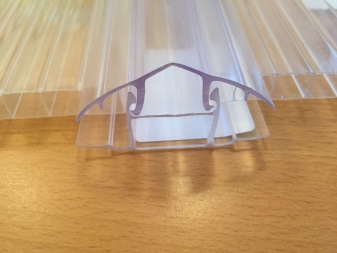
- End. The U-shaped profile is meant. It is necessary for a high-quality plug of the ends of honeycomb panels, so that dirt and water do not penetrate into the cells.

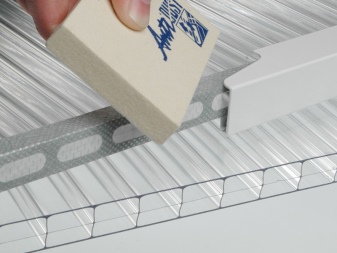
- Ridge. Such a profile allows you to make a special floating mount, which is indispensable when assembling arched structures.
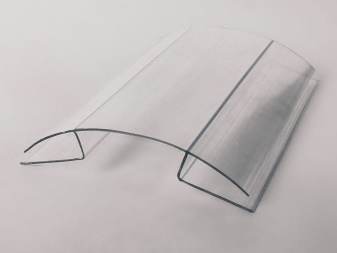
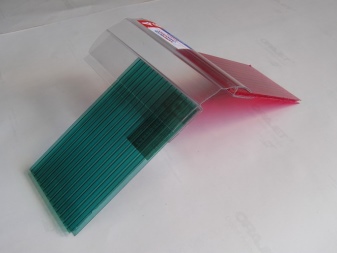
- Solid corner. By means of this plastic sealing profile, the polycarbonate sheets are held together at an angle of 90 degrees. They can also be used to fasten panels that have different thickness values.
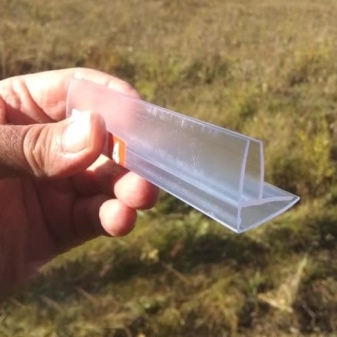

- Wall mounted. With these profiles, the sheet material is attached directly to the wall, and also additionally protect the end sections that are directed towards the walls.
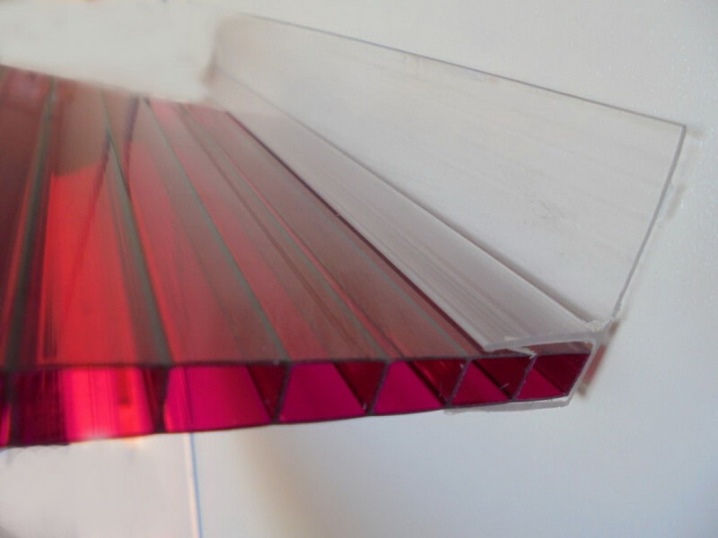
Thermal washers
Installation of polycarbonate sheets is carried out with thermal washers. Thanks to such fasteners, the panels can be fixed as tightly and reliably as possible. The design of thermal washers consists of 3 components:
- a convex plastic washer with a leg filling the hole in the panel;
- sealing ring made of rubber or flexible polymer;
- plugs, which effectively protects the self-tapping screw from contact with moisture.
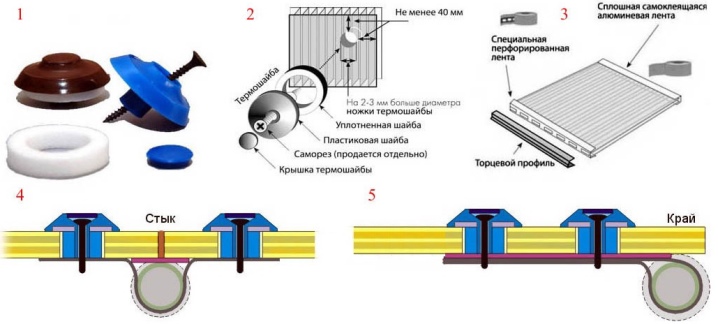
Self-tapping screws, which are used as fasteners for polycarbonate sheets, are very rarely equipped with thermal washers, so it is recommended to buy them separately. Brake discs are divided into several subtypes:
- polypropylene;
- polycarbonate;
- made of stainless steel.
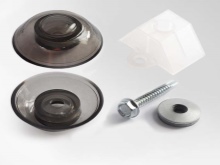

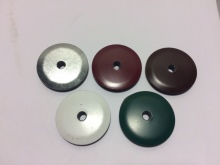
Mini washers
Mini-washers differ from the standard thermal washers mentioned above in that they have a more miniature size. Most often, they are used in confined spaces, as well as in those cases when the fasteners need to be made as less noticeable and catchy as possible. Mini washers are also made from a variety of materials.
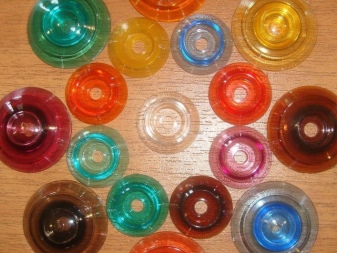

Galvanized tape
Such elements are used only in situations where an arch-type structure is being assembled. Thanks to the galvanized strip, the panels remain safe and sound because they do not have to be drilled or sawed. The tapes pull together the polycarbonate sheets in absolutely any place.
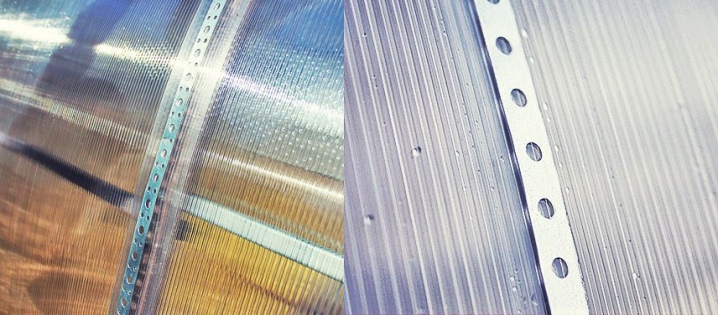
This is especially important when polycarbonate needs to be fixed at sufficiently long distances.
Plugs
Stub profiles are different. For example, for panels of the honeycomb type, L-shaped parts with microscopic pores are usually used. By means of the element in question, the end parts of the material are very well closed. There is also an F-type plug. Such parts are very similar to L-shaped elements.
Basically, when installing greenhouses in the local area, craftsmen use only L-shaped plugs. But for installing a roof, both plug options will be well suited.
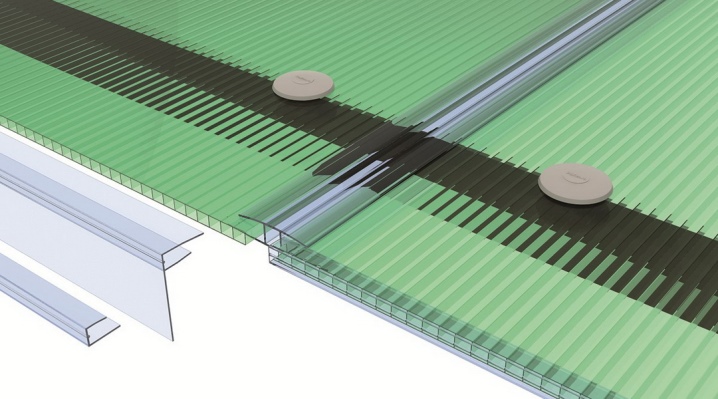
For the correct installation of polycarbonate panels, it is imperative to stock up on all of the listed fasteners in advance. It is advisable to stock up screws, bolts, rivets.
From the toolkit, the master should stock up on the following positions:
- stationery knife (will be appropriate for working with sheets 4-8 mm thick);
- grinder (you can use absolutely any model of this tool);
- an electric jigsaw (it cuts polycarbonate very well and simply if it is equipped with a file with fine teeth, but some skill is required to carry out the work);
- hacksaw (it is used only by experienced specialists, since polycarbonate sheets can begin to crack if cut incorrectly);
- laser (one of the most convenient and accurate methods for cutting polycarbonate, but the tool itself is very expensive, so it is more often used by professionals).
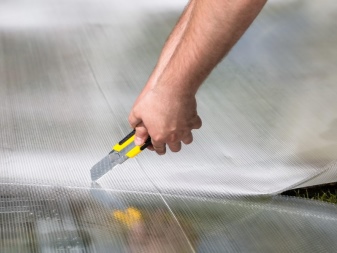


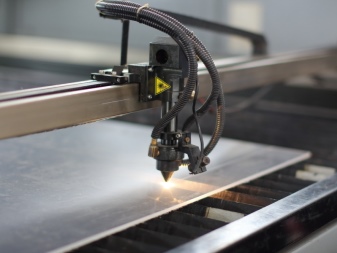
It is recommended to prepare all the components necessary for the work before starting the installation. Place all the components close at hand so you don't have to waste time looking for the item you want. To work with polycarbonate, it is best to use only high-quality, correctly working tools.
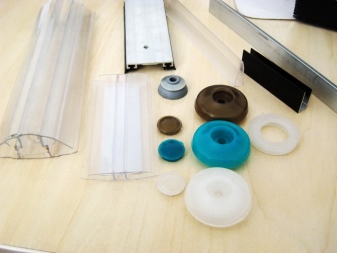
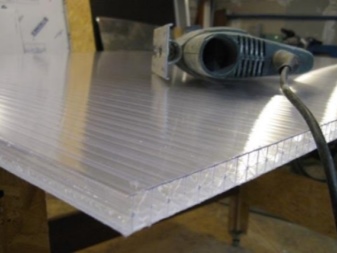
Malfunctioning devices can spoil sheet material without the possibility of its recovery.
How to fix cellular polycarbonate?
Special cellular polycarbonate is in great demand today. This material can be fixed on one basis or another using a very simple and understandable technology. There are several ways to fasten sheet material to the crate. Honeycomb sheets are allowed to be attached to the metal profile. The material from which the base is made is reflected in the suitable fasteners on which the panels are fixed.

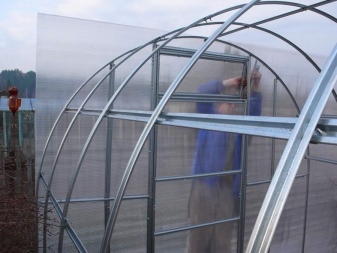
Most often, self-tapping screws for metal or wood are used for fasteners. Thermal washers are included with some options, which were mentioned above. There is a special leg in the design of thermal washers. These fasteners are selected to match the thickness of the panels to be installed.
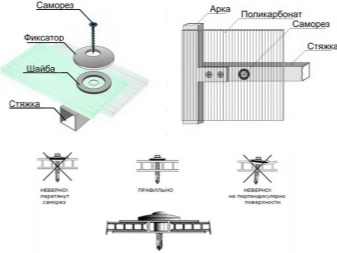
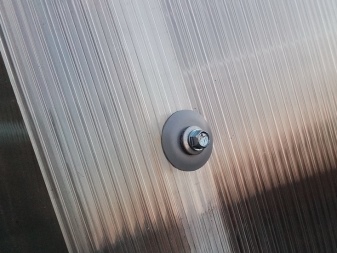
The considered parts will not only protect the material from possible damage and deformation, but also reduce heat loss due to contacts with self-tapping screws - cold conductors. When installing polycarbonate sheets to an iron or metal base, it is recommended to place self-tapping screws in pre-drilled holes. They must meet a number of requirements.
- Holes can only be made between the stiffeners. The minimum distance from the edge should be 4 cm.
- When making holes, it is important to anticipate possible thermal expansion of the material, due to which it can begin to move. Therefore, the diameter of the holes must necessarily correspond to the diameter of the thermo washers.
- If the plastic is too long, holes in it must be made not just of a large size, but with a longitudinally elongated shape.
- The angle of the hole must be straight. An error of no more than 20 degrees is allowed.
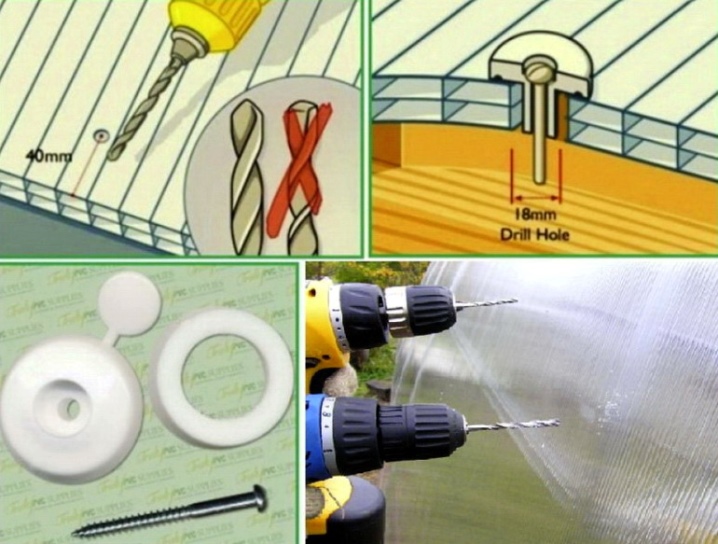
Knowing exactly the technology of installing sheets of cellular polycarbonate directly, they can easily sheathe almost any base. However, the panels still need to be correctly connected to each other. For such purposes, special components are used - profiles. So, it is advisable to use fixed profiles for fastening panels with a thickness of 4-10 mm.

And the split options can connect plates from 6 to 16 mm together. Removable-type profiles must be assembled from a pair of main components: a lower part serving as a base, as well as an upper element - a cover with a lock. If you use a removable profile for installing polycarbonate of a honeycomb structure, then here a short step-by-step instruction will be as follows.
- First, you will need to make holes for self-tapping screws at the base.
- Further, the base will need to be qualitatively fixed on the longitudinal structure. Then the master will need to lay the panels, leaving a gap of only 5 mm. It is he who will be needed to compensate for the expansion of polycarbonate under the influence of high temperatures.
- The profile covers can be snapped in with a wooden mallet.
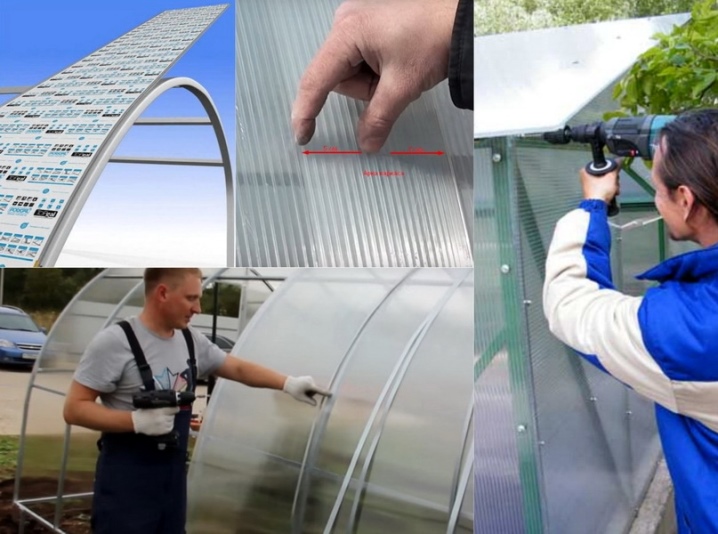
Many craftsmen are interested in: is it possible to mount polycarbonate honeycomb sheets with an overlap? It is possible to apply to such a solution, but only if the work is carried out with thin sheets (no more than 6 mm.). But denser polymer sheets, if laid with an overlap, will form very clearly visible steps due to stacking on top of each other. This problem can be solved only by means of a correctly selected connecting profile. Before installing polycarbonate panels with an overlap, the master must take into account what problems he may face in the future.
- With such a method, the necessary tightness of the sheathed bases is almost always inevitably violated. There may even be a draft, complete blowing out of internal heat, or accumulation of debris and water under the sheathing.
- Panels that are overlapped will carry more severe wind gusts. If the fixation is not strong and secure enough, the polycarbonate may break or come off.
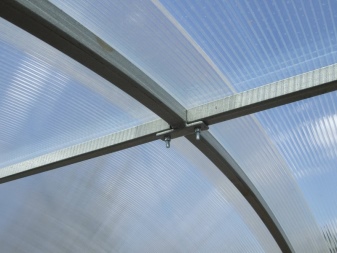
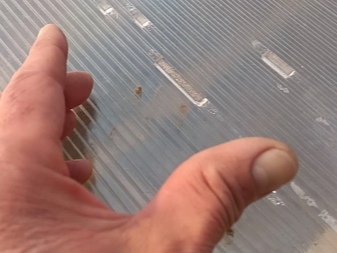
Fastening a monolithic view
You can also install monolithic polycarbonate panels with your own hands. Laying this material does not turn out to be a very difficult and time-consuming process, but it also dictates its own rules and chronology of actions. There are only 2 main ways to screw solid polycarbonate onto a selected base. Let's consider what steps these methods consist of, and which of them will be more practical.
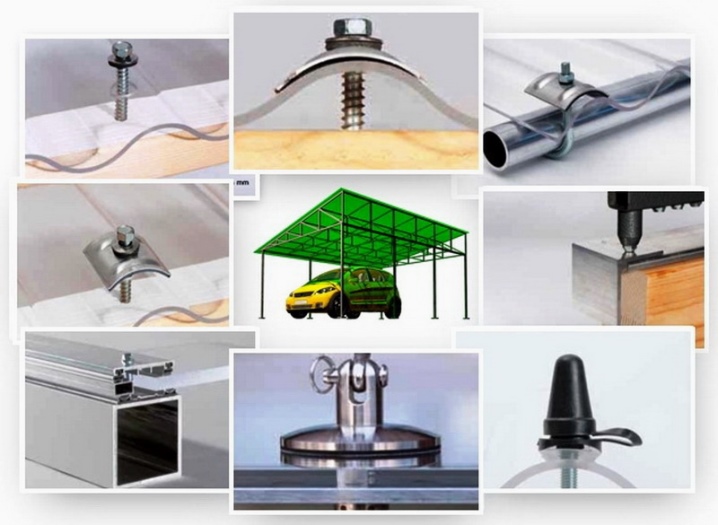
Wet fasteners
The masters resort to such a scheme of actions very often. The "wet" method involves the use of a specialized polymer-based lubricant. In this case, the laying of polycarbonate components is carried out, leaving a certain step, a gap. These gaps act as expansion joints in case the material expands due to temperature changes.
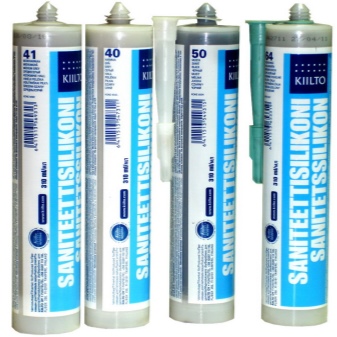
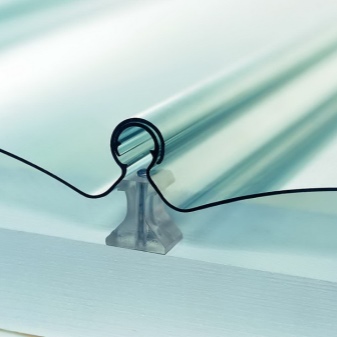
This solution is very suitable for those cases where the construction is based on a wooden crate.
If the frame base is made of a stronger metal, then here it is necessary to use non-polymer mixtures, and special rubber pads are seals. They are combined with a quality sealant. The latter, according to the scheme, must be applied to both the frontal and internal clamping surfaces.
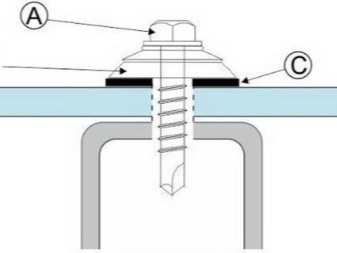

Dry installation
There are many craftsmen who prefer to work with this particular technology. It does not require the use of sealants and other similar solutions. Dry-installed polycarbonate sheets can be mounted directly onto the rubber seal.
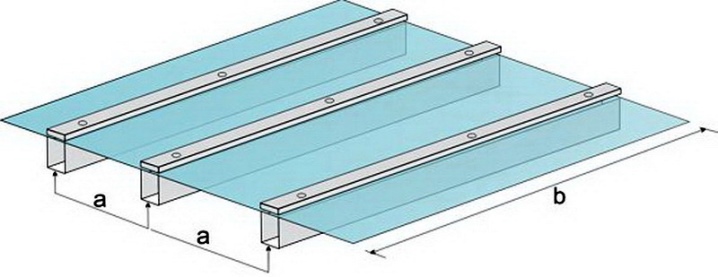
Since the structure itself is not airtight, a drainage system is provided in advance to remove excess water and moisture.
Helpful hints
Polycarbonate attracts consumers not only with its performance characteristics, but also with its ease of installation. Many users install high-quality polycarbonate sheets on their own, rather than spend money on the services of experienced specialists. If you also planned to carry out such work, it is advisable to take on board a few useful tips and tricks.
- If you decide to install polycarbonate on a crate made of practical metal, you need to know that in such structures, the most vulnerable area is the front edge of the surface, on which the polycarbonate panels then rest.
- Often, masters, attaching polycarbonate, resort to a point fixation method. It is considered primitive and slightly spoils the appearance of the finished structure. But if you want to save on fasteners, this method is best suited, and the load on the sheets will not be so great.
- It is possible to cut polycarbonate using different tools, but at the same time we must not forget that during such a procedure it will hardly be possible to avoid unnecessary vibrations. Under their influence, the material can be cut with irregularities and other defects that will have a bad effect on installation work. In order not to face such problems, laying polycarbonate for further cutting should be done only on a very well fixed, stable base, located strictly horizontally.
- It is strongly recommended to make a few holes in the end part of the polycarbonate panels. They will be very useful for better and more complete outflow of liquid from sheet material.
- Polycarbonate is best cut with quality carbide discs with small, undiluted teeth. It is after them that the cut is as accurate and even as possible.
- It is not recommended to hurry too much and rather to remove the film on its surface from polycarbonate. Such coatings are used not only for additional protection of panels from possible damage, but also directly for the proper conduct of installation processes.
- The master must remember that the upper ends of the polycarbonate panels must be properly closed. For such purposes, it is not recommended to use ordinary scotch tape - it will not be enough. Better to use a specialized tape.
- The lower ends of the panels, on the contrary, must always remain open. This is necessary so that condensing moisture can safely leave the sheet material, and not accumulate in it, without having a drainage path.
- Of course, polycarbonate must be fastened reliably and efficiently, but at the same time it is strongly not recommended to tighten the screws holding the sheet material extremely tightly. It is not a good idea to rigidly secure the entire panel. The structures must have at least a small degree of freedom so that they can freely "breathe", expanding and contracting at the moment of the onset of cold or warmth.
- If it is planned to make a beautiful arched structure, then the polycarbonate will need to be correctly folded beforehand. The bend is required to be made in a line along the air channels.
- To attach polycarbonate to a selected and properly prepared base, the master needs to stock up on only high-quality, reliable fasteners. All fasteners must be intact and free of damage or defects. If you save on bolts and washers, then in the end the structure will not turn out to be the most wear-resistant.
- Choosing the right material for the lathing for polycarbonate, you need to remember that it is much easier to care for metal structures, they last longer.Wooden bases require constant antiseptic treatments, and their service life is much shorter.
- Despite the fact that polycarbonate is a very convenient and pliable material in processing, it is still recommended to work with it carefully and slowly. Cut the sheets carefully, without too much haste. Keep in mind that the ability to bend them also has its limits. If you treat the material too aggressively and carelessly, it can be seriously damaged.
- If the sheets are installed on a steel frame, then it must be painted, but only under the fasteners. This can be quite problematic to do. It is not so easy to get into the right places with a brush, so it will be easier to dismantle polycarbonate sheets. Before painting, the metal is thoroughly cleaned, and, if necessary, the sealing gum is changed.
- You need to carefully paint the frame under the sheets. Dyes or solvents must not come into contact with the polycarbonate. Such compositions can seriously harm the material under consideration, negatively affect both its appearance and performance.
- If you are afraid to independently lay and fix polycarbonate sheets on a prepared base, it makes sense to contact a specialist. So you will save yourself from unnecessary expenses and mistakes made with incorrect installation.
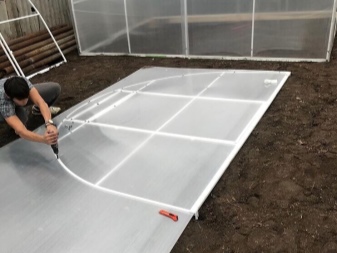
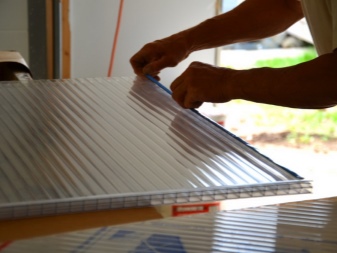

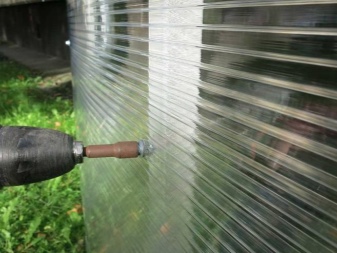
For information on how to fix cellular polycarbonate, see the next video.













The comment was sent successfully.